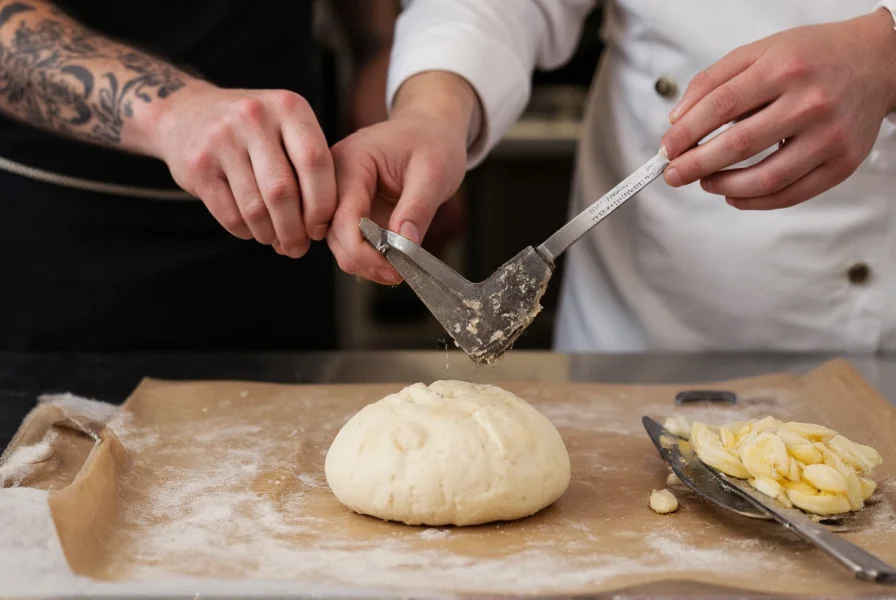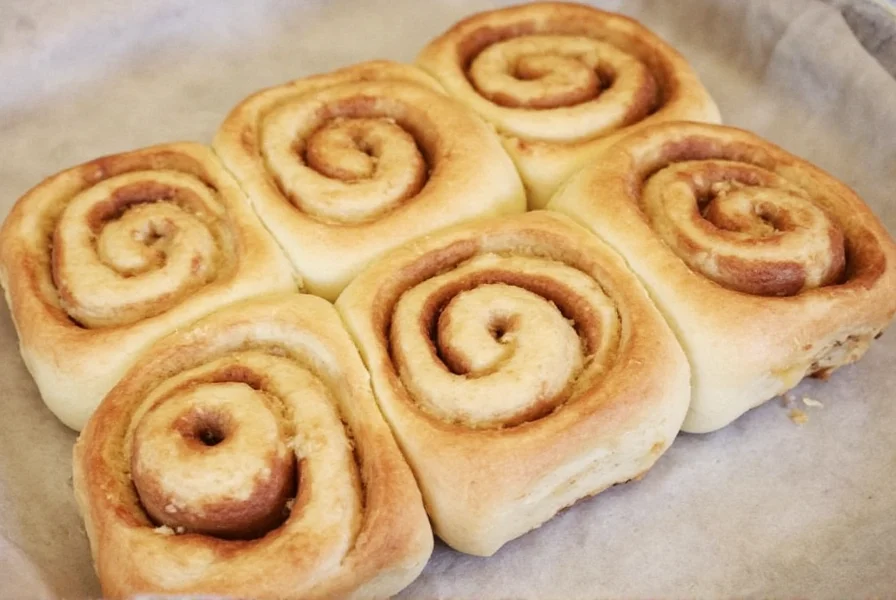Transform ordinary cinnamon rolls into bakery-quality masterpieces by using bread flour for structure, the tangzhong method for moisture retention, premium Saigon cinnamon, espresso powder to deepen flavors, chilling dough before cutting, and brown butter cream cheese frosting. Avoid overfilling to prevent leakage and bake at precisely 350°F (175°C) for optimal rise and browning.
Many home bakers struggle with cinnamon rolls that turn out dry, dense, or with filling that leaks out during baking. The difference between decent and extraordinary cinnamon rolls lies in specific techniques that professional bakers use consistently. This guide reveals the exact methods to elevate your cinnamon rolls from good to exceptional, focusing on dough texture, flavor complexity, and structural integrity.
Perfecting the Dough Foundation
The foundation of exceptional cinnamon rolls starts with the dough. Most home recipes use all-purpose flour, but switching to bread flour increases gluten development for better structure without sacrificing tenderness. For truly remarkable texture, implement the tangzhong method – a Japanese technique where you cook a small portion of the flour and liquid into a roux before incorporating it into the main dough.
Here's how to make tangzhong for cinnamon rolls:
| Tangzhong Ratio | Ingredients | Process |
|---|---|---|
| 1:5 flour to liquid | 20g bread flour + 100g milk | Cook over medium heat until thick paste forms (140°F/60°C) |
| Cool completely | Before adding to main dough | Refrigerate 1 hour for best results |
This technique increases moisture retention by up to 40%, preventing the dryness that plagues most homemade cinnamon rolls. The cooked starches in tangzhong absorb more water and release it slowly during baking and storage.

Elevating the Cinnamon Filling
Most cinnamon roll recipes use a basic mixture of sugar and cinnamon, but professional bakers incorporate additional elements that create depth of flavor. The key is using premium Saigon cinnamon, which has nearly double the cinnamaldehyde content of regular cinnamon, delivering a more intense, complex flavor.
For truly exceptional filling, add these professional touches:
- Espresso powder (1 tsp) – enhances cinnamon flavor without making rolls taste like coffee
- Brown butter instead of regular melted butter – adds nutty complexity
- Orange zest (1 tbsp) – brightens the rich flavors
- Cardamom (1/4 tsp) – complements cinnamon beautifully
Critical technique: spread filling 1/2 inch from edges to prevent leakage during baking. Many home bakers overfill their rolls, causing the filling to bubble out and create a burnt mess in your oven. Measure your filling – 1/2 cup per standard recipe is sufficient.
Advanced Glaze and Frosting Techniques
The standard cream cheese frosting works, but transforming it with brown butter creates a sophisticated flavor profile that elevates your cinnamon rolls from breakfast pastry to dessert-worthy treat. Here's the professional approach:
- Brown 8 ounces of butter (1 cup), then chill until solid but spreadable
- Cream with 4 ounces cream cheese until smooth
- Add 2 cups powdered sugar, 1 tsp vanilla, and pinch of salt
- For extra dimension, add 1 tbsp bourbon or 1/2 tsp maple extract
Apply the frosting only when rolls are warm (110°F/43°C) – not hot, not cold. This temperature allows the frosting to melt slightly into the crevices without running off completely.
Professional Baking Methods
Temperature control makes or breaks cinnamon rolls. Preheat your oven to exactly 350°F (175°C) and use an oven thermometer to verify accuracy. Place rolls in the center rack and rotate the pan halfway through baking.
Professional bakers use these additional techniques:
- Steam injection – Place a shallow pan of water on the bottom rack
- Proofing control – Final rise at 85°F (29°C) with 75% humidity
- Timing precision – Bake 22-25 minutes until internal temperature reaches 190°F (88°C)
For home bakers without professional equipment, create a proofing environment by placing dough in a turned-off oven with a bowl of hot water. Check rolls at 20 minutes and remove when golden brown with internal temperature between 185-190°F.

Troubleshooting Common Issues
Even with perfect recipes, problems can occur. Here's how professional bakers solve the most frequent cinnamon roll issues:
- Dense texture – Overworked dough or expired yeast; use instant yeast and mix only until combined
- Filling leakage – Too much filling or insufficient edge sealing; leave 1/2 inch border and pinch seams
- Uneven rising – Inconsistent proofing temperature; use oven light for gentle warmth
- Burnt bottoms – Oven too hot or dark pan; use light-colored pan and lower rack position
Chilling the rolled dough for 20 minutes before cutting creates cleaner slices and prevents deformation during baking. This simple step makes a dramatic difference in the final appearance and structure of your rolls.
Conclusion
Creating exceptional cinnamon rolls requires attention to specific details that most home recipes overlook. By implementing the tangzhong method for superior moisture, using premium Saigon cinnamon with complementary flavor enhancers, applying precise baking temperatures, and perfecting your frosting technique, you'll produce cinnamon rolls that rival professional bakery offerings. Remember that consistency comes from measuring ingredients by weight, controlling proofing conditions, and respecting the science behind each technique. These methods transform what many consider a simple comfort food into a sophisticated pastry worthy of special occasions.
How can I make my cinnamon rolls more moist without becoming soggy?
Use the tangzhong method with a 1:5 flour-to-liquid ratio, which increases moisture retention by up to 40% without creating sogginess. Measure ingredients by weight for accuracy, and avoid overfilling with wet ingredients like too much butter in the filling.
What's the best cinnamon variety for cinnamon rolls?
Saigon cinnamon (Cinnamomum loureiroi) is the professional choice, containing nearly double the cinnamaldehyde of regular cinnamon. It delivers a more intense, complex flavor with subtle citrus notes that enhances the overall taste profile of your rolls.
Why do my cinnamon roll fillings always leak out during baking?
Filling leakage occurs when you spread filling too close to the edges or use too much filling. Leave a 1/2 inch border around all edges, use no more than 1/2 cup filling per standard recipe, and pinch the seam tightly before cutting. Chilling the rolled dough for 20 minutes before slicing also prevents leakage.
How can I make my cream cheese frosting less sweet?
Reduce powdered sugar to 1.5 cups, use full-fat cream cheese, and incorporate brown butter for complexity. Adding a pinch of salt (1/8 tsp) and 1/2 tsp vanilla extract balances sweetness. For sophisticated flavor, include 1 tbsp bourbon or 1/4 tsp maple extract.
What's the ideal internal temperature for perfectly baked cinnamon rolls?
Cinnamon rolls are perfectly baked when they reach an internal temperature of 185-190°F (85-88°C). Use an instant-read thermometer inserted into the center of a roll to check doneness, as visual cues alone can be misleading.











 浙公网安备
33010002000092号
浙公网安备
33010002000092号 浙B2-20120091-4
浙B2-20120091-4